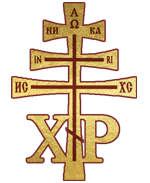The United Roman-Ruthenian Church is a unique and diverse autocephalous (independent) religious institution that brings together two distinct Christian traditions – Orthodoxy and Catholicism. This unification has not only fostered a sense of Christian brotherhood among its followers but has also created an environment where ancient traditions and cultures coexist harmoniously.
The United Roman-Ruthenian Church is a canonical Orthodox and Catholic Church through adherence to the historic and constant faith of the Church as taught by the saints and the Church Fathers (St. Vincent of Lerins) and the faith once delivered for all unto the saints (Jude 3). Neither affiliation with the Apostolic See of Sts. Stephen and Mark, nor with the Bishop of Rome, of Constantinople, or of any other ecclesiastical jurisdiction is required. The Church accepts as canonical all who accept the traditional faith. Those who insist on being members of a particular "church club" (for example, communion with a particular patriarch) act against the unity of Christian people that Christ desires.
The origins of the United Roman-Ruthenian Church can be traced back to the very beginning of Christianity; to Rome, to Byzantium, Syria, and India, and to Eastern Europe. The result today is a distinct branch of Christianity that is both Eastern and Latin, Orthodox and Catholic. The Church is in hereditary descent from Rome and Russia and is considered the temporal successor of St. Peter. St. John Paul II relinquished the temporal claims of the Bishops of Rome, except for those pertaining to Vatican City, while St. Benedict XVI renounced the Patriarchal title. The succession to the temporal heritage of Rome now rests with the United Roman-Ruthenian Church as the next-closest heir in recognised and documented succession from St. Leo X in the Holy Roman Empire.
The United Roman-Ruthenian Church also has direct Apostolic succession from other key Apostles such as Andrew, Thomas, Thaddeus, and Bartholomew. It is an ethno-religious community that does not have its own political territory but functions as a separate entity -- a state unto itself. The Church represents people across various modern countries and holds historical claims to the Roman Empire as the temporal successor of St. Peter, granting it specific rights. The temporal heritage of the Church today form the Pontifical Imperial State of Rome-Ruthenia (see above). As a fully Orthodox and Catholic autocephalous (independent) institution, the United Roman-Ruthenian Church possesses equal authority to other independent Patriarchates, including the Roman Communion (Vatican).
The United Roman-Ruthenian Church is not established by people, but rather it is part of the continuous Church founded founded by Jesus Christ. However, the Apostolic founder of our principle diocese is Saint Edwin Caudill. He brought his Anglican See (Diocese of the Southwest) into Orthodox and Catholic Apostolic heritage. That diocese evolved in time into the Diocese of Rome-Ruthenia.
One of the notable aspects of this union is the preservation of both traditions within the liturgy. The United Roman-Ruthenian Church incorporates elements from Latin, Byzantine, and Syrian spirituality, ensuring that followers can engage with their faith in a way that is meaningful to them. The Eucharistic celebration, for example, includes elements such as incense, icons, and chant, which are essential components of Byzantine worship. By embracing elements from both traditions, this church offers a vibrant worship experience that resonates with people from diverse backgrounds.
What makes the United Roman-Ruthenian Church truly remarkable is that it allows for cultural diversity within its congregations, fostering a sense of belonging among its followers while acknowledging their distinct cultural backgrounds. By bringing together two different Christian traditions, the United Roman-Ruthenian Church promotes dialogue and understanding between various branches of Christianity. It serves as an example of how different traditions can come together in pursuit of a common goal - traditional worship and the timeless faith of the Holy Gospels.
The Church's commitment to unity extends beyond its services. It actively promotes interfaith dialogue, fostering understanding and respect among different religions. Through this outreach, the United Roman-Ruthenian Church has become a symbol of hope for those seeking peace and harmony in their communities.
Furthermore, the Church plays an integral role in preserving cultural heritage. Its designs, traditions, and customs showcase stunning blends of Western European Gothic and Baroque influences with intricate Byzantine and Russian designs, creating awe-inspiring experiences. The Church's traditional art tells stories passed down through generations, connecting present-day worshippers with their ancestors' rich cultural tapestry.
The United Roman-Ruthenian Church stands as a testament to unity with diversity in an era of division. Through its incorporation of Latin, Byzantine, Eastern European, and Syrian traditions, it provides a space where followers can engage with their faith in a meaningful way. This union not only preserves the rich cultural heritage of its congregations but also promotes dialogue and understanding among different Christian traditions.With its rich history and unwavering commitment to faith, this church serves as a beacon of hope, inspiring countless individuals across generations.
Return to Main Page

Pontifical Imperial State
of Rome-Ruthenia
United Roman-Ruthenian Church